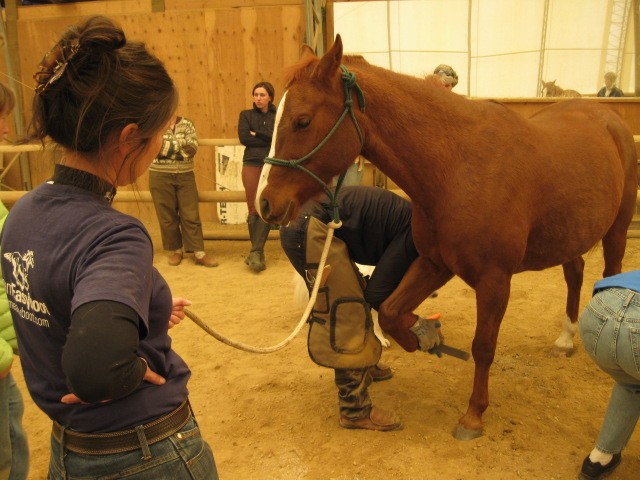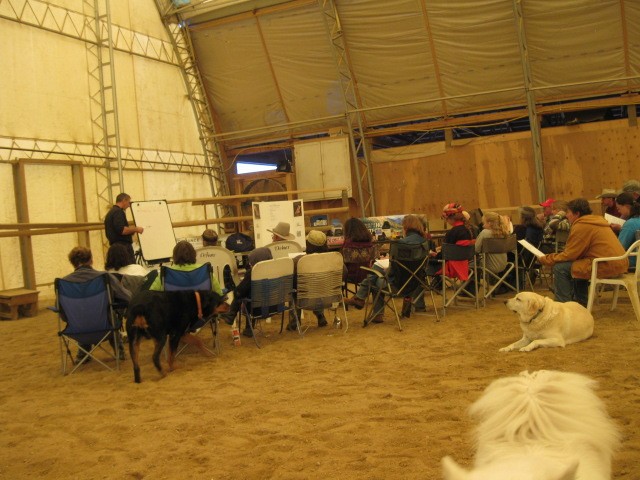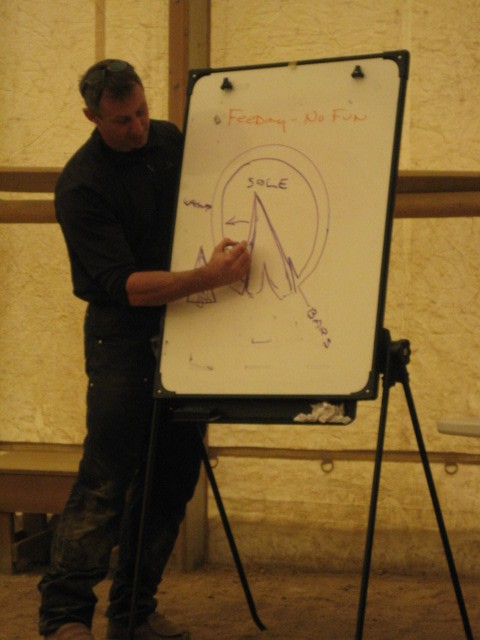Submitted by Charmain Q De Hart, Team Easyboot 2012 Member
Having a barefoot clinic is not an easy task. Although we have done numerous presentations and several clinics, I still had that anxious feeling I get when I really don’t want to forget anything. That would include every type of boot you have to display (thanks to EasyCare for providing single boots for display purposes), brochures on different types of boots and boot accessories, brochures on barefoot services, handouts on what your lecture is covering, banners and posters of anatomy and a white board to draw on.

You never know exactly what people expect when they attend a Barefoot Clinic. Starting out with nutrition always seems like a good idea; get people while they are fresh and can take as much as they can in before we move on to what they really think they came for. Next would be the anatomy of the hoof and trimming and last but not least boots.

Six years ago when we first ventured out spreading the barefoot word, utilizing boots for barefoot horses was pretty much unheard of here in our part of the world. Sure people pulled their horses shoes off during the winter, but in a true barefoot person’s mind we don’t consider this truly going barefoot. Barefoot to us is no metal shoes, completely barefoot 24/7, 365 days out of the year and booting when needed. The only boot that anyone really heard of was the Original Easyboot. Oh yes, the infamous Easyboot, the boot that people still say didn’t stay on if ridden on tough uneven terrain.
Fast forward to 2012 where boots have come a long way. The options are greater and the quality of the products has changed two fold. There are many types of boots for different types of disciplines. There are low profile boots like the Glove, the Glue-On or the Epic for people that put 25+ miles a week on their horse. If they are the casual trail rider their boot of preference could be the Trail or maybe the Old Mac’s. And of course for rehab purposes the Rx. Easycare is on the cutting edge of new, improved boot selection.

The turnout was great and we received a lot of positive feedback which makes all the work of putting a clinic together worth it! If one person can be convinced “to come to the dark side”, I feel we have accomplished something good. After a 3 hour lecture, one person pulled shoes off of her gelding and another person left exclaiming she was going to try and go barefoot with her horse. The consensus was that most people got most out of nutrition lecture.
Knowing when the best time for their horse to be on pasture to how to test their hay for any lacking minerals and sugar levels. Another person that had been going barefoot for quite some time spoke with us after the clinic in regards to boots. She felt she had gotten a ton of info in regards to diet, pasture management and trimming but at the point of us talking about boots she said the “light” went on and she said that was the piece of the puzzle she was missing to be able to ride her horse comfortably on the trail.
Basically what it all boils down to is proper trimming on a regular schedule, movement and a good environment build good hooves. These things combined with proper nutrition build great hooves.
Charmain Q De Hart




